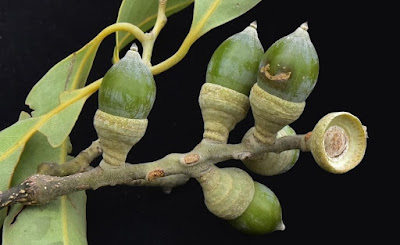 |
| the Khok Pha Suam Locality of northeastern, Thailand Early Cretaceous (Aptian-Albian) in Manitkoon, Deesri, Lauprasert, ... et Chanthasit, 2022. DOI: 10.3897/fr.25.83081 Palaeoenvironmental interpretation drawing by Sakka Weerataweemat. |
Abstract
The Khok Pha Suam locality in the province of Ubon Ratchathani, northeastern, Thailand, is known as “the last home of Thai dinosaurs”, because it belongs to the Lower Cretaceous Khok Kruat Formation (Aptian-Albian) which is currently the youngest Mesozoic vertebrate fossil producing formation in the Khorat Group. Here, we describe a diverse vertebrate assemblage, including hybodonts, ray-finned fishes, turtles, crocodyliforms, pterosaurs, and dinosaurs from the Khok Pha Suam locality. The updated data on the Khok Kruat fauna provides a better understanding of the variety and distribution of Early Cretaceous continental ecosystems, which are useful for palaeoenvironmental reconstruction. In addition to consolidating unincorporated data on fauna, this study also provides the palaeontological data necessary to illustrate the palaeoecosystem to the general public, as well as improving the academic value of the Pha Chan-Sam Phan Bok Geopark.
Key Words: Aptian-Albian, Khorat Group, Lower Cretaceous, Pha Chan-Sam Phan Bok Geopark, Vertebrates
 |
| Palaeoenvironmental interpretation of the Early Cretaceous (Aptian-Albian) Khok Pha Suam Locality. Drawing by Sakka Weerataweemat. |
Sita Manitkoon, Uthumporn Deesri, Komsorn Lauprasert, Prapasiri Warapeang, Thanit Nonsrirach, Apirut Nilpanapan, Kamonlak Wongko and Phornphen Chanthasit. 2022. Fossil Assemblage from the Khok Pha Suam Locality of northeastern, Thailand: An Overview of Vertebrate Diversity from the Early Cretaceous Khok Kruat Formation (Aptian-Albian). Fossil Record. 25(1): 83-98. DOI: 10.3897/fr.25.83081
กลุ่มชีวินดึกดำบรรพ์ แหล่งซากดึกดำบรรพ์โคกผาส้วม จังหวัดอุบลราชธานี ประเทศไทย:
ความหลากหลายของสัตว์มีกระดูกสันหลัง หมวดหินโคกกรวด ยุคครีเทเชียส
ความหลากหลายของสัตว์มีกระดูกสันหลัง หมวดหินโคกกรวด ยุคครีเทเชียส
อุทยานธรณีผาชัน-สามพันโบก
ความหลากหลายของสัตว์มีกระดูกสันหลังจากมหายุคมีโซโซอิกในแผ่นทวีปอินโดไชน่า










































-novataxa_2022-Khuroo_Hussain_et_Gulzar.jpg)
-novataxa_2022-Khuroo_Hussain_et_Gulzar.jpg)
--2022_Amarasinghe_Kamsi_Riyanto_et-al__@Thasun.jpg)
--2022_Amarasinghe_Kamsi_Riyanto_et-al__@Thasun.jpg)
--2022_Amarasinghe_Kamsi_Riyanto_et-al__@Thasun.jpg)
--2022_Amarasinghe_Kamsi_Riyanto_et-al__@Thasun.jpg)